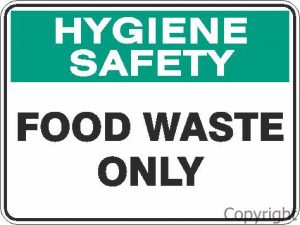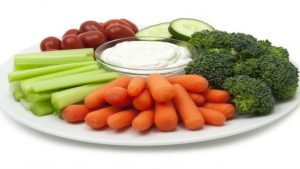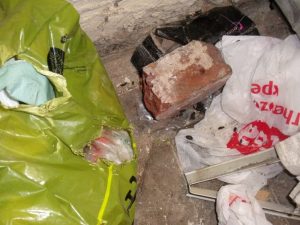The U.S. Food and Drug Administration, along with the Centers for Disease Control and Prevention (CDC) and state and local partners, are investigating a multistate outbreak of E. coli O157:H7 illnesses linked to romaine lettuce from the Yuma, Arizona, growing region.
 The FDA, along with CDC and state partners, initiated an environmental assessment in the Yuma growing region to further investigate potential sources of contamination linked to this outbreak.
The FDA, along with CDC and state partners, initiated an environmental assessment in the Yuma growing region to further investigate potential sources of contamination linked to this outbreak.
Samples have been collected from environmental sources in the region, including water, soil, and cow manure. Evaluation of these samples is ongoing.
To date, CDC analysis of samples taken from canal water in the region has identified the presence of E. coli O157:H7 with the same genetic finger print as the outbreak strain. We have identified additional strains of Shiga-toxin producing E. coli in water and soil samples, but at this time, the samples from the canal water are the only matches to the outbreak strain.
Analysis of additional samples is still ongoing, and any new matches to the outbreak strain will be communicated publicly and with industry in the region.
Identification of the outbreak strain in the environment should prove valuable in our analysis of potential routes of contamination, and we are continuing our investigation in an effort to learn more about how the outbreak strain could have entered the water and ways that this water could have come into contact with and contaminated romaine lettuce in the region.
As of June 27, the CDC reports that 218 people in 36 states and Canada have become ill. These people reported becoming ill in the time period of March 13, 2018 to June 6, 2018. There have been 96 hospitalizations and five deaths.
The traceback investigation indicates that the illnesses associated with this outbreak cannot be explained by a single grower, harvester, processor, or distributor. While traceback continues, the FDA will focus on trying to identify factors that contributed to contamination of romaine across multiple supply chains. The agency is examining all possibilities, including that contamination may have occurred at any point along the growing, harvesting, packaging, and distribution chain before reaching consumers.
 The FDA, along with CDC and state partners, initiated an environmental assessment in the Yuma growing region to further investigate potential sources of contamination linked to this outbreak. To date, CDC analysis of samples taken from canal water in the region has identified the presence of E. coli O157:H7 with the same genetic finger print as the outbreak strain. We have identified additional strains of E. coli in water and soil samples, but at this time, the samples from the canal water are the only matches to the outbreak strain.
The FDA, along with CDC and state partners, initiated an environmental assessment in the Yuma growing region to further investigate potential sources of contamination linked to this outbreak. To date, CDC analysis of samples taken from canal water in the region has identified the presence of E. coli O157:H7 with the same genetic finger print as the outbreak strain. We have identified additional strains of E. coli in water and soil samples, but at this time, the samples from the canal water are the only matches to the outbreak strain.
The FDA is continuing to investigate this outbreak and will share more information as it becomes available.
“More work needs to be done to determine just how and why this strain of E. coli O157:H7 could have gotten into this body of water and how that led to contamination of romaine lettuce from multiple farms,” said Dr. Scott Gottlieb, commissioner of the U.S. Food and Drug Administration, in a statement.
 “It’s important to have this playground when my daughter gets home from the hospital, because it’s hope,” Sanders said. E. coli led to kidney failure for 6-year-old Ashlin three years ago.
“It’s important to have this playground when my daughter gets home from the hospital, because it’s hope,” Sanders said. E. coli led to kidney failure for 6-year-old Ashlin three years ago.









